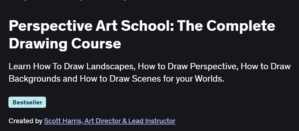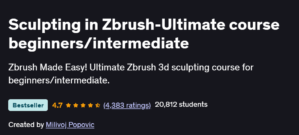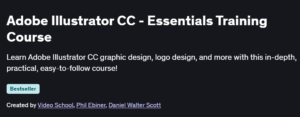What will you learn in Anime Academy: Characters and Illustrations Course
Master the fundamentals of drawing anime-style characters: proportions, anatomy, and expressions
Develop dynamic poses and action lines to bring illustrations to life
Refine line work, inking techniques, and clean-up for polished art
Apply color theory, shading, and highlights for depth using digital tools
Design original character outfits, accessories, and backgrounds
Build a cohesive workflow from sketch to finished illustration
Program Overview
Module 1: Foundations of Anime Anatomy
⏳ 1 hour
Topics: Head and body proportions, figure construction, basic gesture drawing
Hands-on: Sketch three characters—male, female, and chibi—to practice core proportions
Module 2: Dynamic Poses & Gesture Dynamics
⏳ 1.5 hours
Topics: Action lines, balance, weight distribution, foreshortening principles
Hands-on: Draw five quick gesture studies from reference photos, emphasizing movement
Module 3: Facial Features & Expressions
⏳ 1 hour
Topics: Eye shapes, mouth and nose stylization, eyebrow positioning for emotion
Hands-on: Create an expression sheet showing at least six distinct emotions
Module 4: Line Art & Inking Techniques
⏳ 1 hour
Topics: Brush settings, pressure variation, cleaning up sketches, line weight hierarchy
Hands-on: Ink one of your gesture sketches with three line-weight variations
Module 5: Color & Shading for Anime Art
⏳ 1.5 hours
Topics: Flat color blocking, cel shading vs. soft shading, highlight placement
Hands-on: Color and shade your inked character using at least two lighting scenarios
Module 6: Character Design & Final Illustration
⏳ 2 hours
Topics: Outfit and accessory design, background integration, composition tips
Hands-on: Develop an original character turnaround and render a full-color scene
Get certificate
Job Outlook
Anime illustration skills are in demand for concept artists, character designers, and freelance commissions
Roles include Manga Artist, Game Concept Illustrator, and Social Media Content Creator
Salaries and rates vary: freelance illustrators can charge $50–$150+ per finished character, while studio roles range $45,000–$70,000+ annually
Growing interest in indie game development, YouTube tutorials, and Patreon-supported art drives continual opportunity
Specification: Anime Academy: Characters and Illustrations
|
FAQs
- No prior drawing experience is required; the course is beginner-friendly.
- Basic familiarity with art materials or digital drawing tools is helpful but optional.
- The course introduces character design and illustration techniques step by step.
- Students learn proportions, poses, and expressions from scratch.
- Practical exercises allow beginners to create full characters confidently.
- Yes, the course covers digital illustration primarily, with concepts applicable to traditional drawing.
- Students learn to use digital tools for sketching, coloring, and shading.
- Focuses on character design, anatomy, and dynamic poses.
- Techniques taught can be adapted for hand-drawn artwork.
- Emphasizes practical application for creating complete illustrations.
- Yes, the course encourages experimenting with shapes, colors, and expressions.
- Teaches how to combine basic techniques to create distinct characters.
- Provides tips for stylizing features while maintaining consistency.
- Includes exercises for creative character and costume design.
- Helps learners refine a signature style over time with practice.
- Yes, the course builds foundational skills needed for professional work.
- Covers character creation, anatomy, facial expressions, and action poses.
- Students learn workflows for completing polished illustrations.
- Skills can be applied to freelance, game design, or animation projects.
- Complements further study in advanced digital art or animation courses.
- The course includes step-by-step exercises for sketching, inking, and coloring.
- Students create full characters and illustrations from start to finish.
- Practical assignments reinforce anatomy, proportion, and perspective.
- Encourages experimentation with poses, expressions, and costumes.
- Additional practice outside the course is recommended to fully develop skills.





